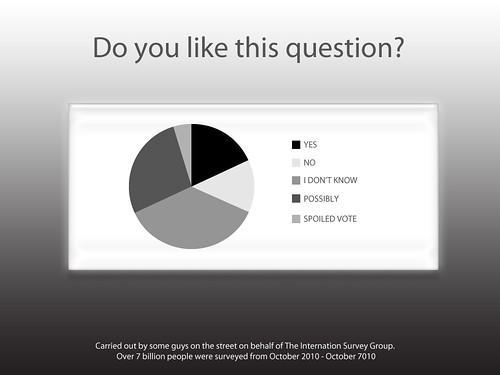On Monday, I shared some links to some national polling and survey data to help you learn more about your target audiences. But you’ll probably want to supplement that with a survey of the people on your list.
What questions should you ask to find out what people want to read in your newsletter or on your blog? Coming right out and asking, “What should we put in our newsletter?” as an open-ended question is probably not the best approach. Instead, I’d recommend some questions that give you some insights that you can then translate into content, rather than asking the survey recipient to do all of that work for you.
Last year, I worked on a survey of friends and family of missioners serving with Franciscan Mission Service. We were interested in learning more about the kinds of communications that might keep this broader network of potential supporters engaged, and specifically asked about communications sent back home by missioners serving abroad. We asked how often people wanted to hear from missioners, asked them to pick the top three kinds of posts they’d want to read on a missioner’s blog, and how they would prefer to receive those updates (e.g. email, postcards, Facebook, etc.) Using the answers (some of which surprised us), we crafted some blogging guidance for missioners and reworked how FMS might use email marketing in the future.
In the same survey, to learn more about donor motivations, we listed a series of statements like, “I support FMS financially because I know a missioner and want to support that person’s mission” and “I support FMS financially because the Franciscan way of life is very important to me personally.” We asked recipients to indicate the extent to which they agreed/disagreed with those statements. That too helped us decide what type of content was most likely to connect with donors.
What if you want to use your newsletter as a way to empower people to makes changes in their own lives or to provide services or technical assistance to them?
That was part of the survey that I worked on with ASPCApro last year as we evaluated their content strategy. To get a better understanding of how shelter employees and volunteers used the resources on the ASPCApro website, we asked them how many hours a day they spent on a computer and whether they accessed the web at work via a desktop, laptop, tablet, or smartphone. We also gave them a list of the types of content they would find on the website and asked them to pick their top two favorites. To get a sense for what content they associated most with ASPCApro and with other organizations that help shelter staff, we gave them a list of topics and asked them which website they would likely visit first to find information on each given topic.
You can also ask open-ended questions like “What are your biggest challenges with (fill in the blank related to your cause)?” Producing a word cloud with the answers can help you see at a glance what’s on the minds of the people who respond. (Here are the word clouds for what nonprofit marketers say scared them and excited them about 2012.)
Other questions along those lines are
- What’s the hardest part about {you fill} for you right now?
- What’s one hard-fought lesson you’ve learned about {you fill}?
- What do you think is the biggest misperception about {you fill} out there now?
Surveys can also help you understand how your supporters perceive your organization and your work. One of my favorite questions to ask is, “If a friend asked why you support {your cause}, what would you tell them?”
I recently received a survey from the Wilderness Society that asked, “On a scale of 1 to 10 with 10 being the highest, how likely would you say you would be to recommend involvement with The Wilderness Society — either as a donor or an activist or both — to a friend, family members, or colleague?” If you selected less than 9, it asked, “What would The Wilderness Society have to do to merit a 9 or 10?” with a text box to fill in the answer. If you chose a 9 or 10, it asked, “What led you to choose the number you chose? We want to be able to keep it up” with another text field. It also asked, “Among the environmental groups you support or recieve emails from, how would you rank The Wilderness Society in importance to you personally” with the answer choices of “Most important group” or “One of the 2-3 most important groups” or “One of many groups I support.”
Finally, in all situations, it’s always good to include a final open-ended box with something like, “Is there anything else you’d like us to know?”
I hope these examples have helped you think about your own surveys of supporters. Please share some of your favorite questions and experiences in the comments!
P.S. Here are some tips on getting people to take your online survey.






